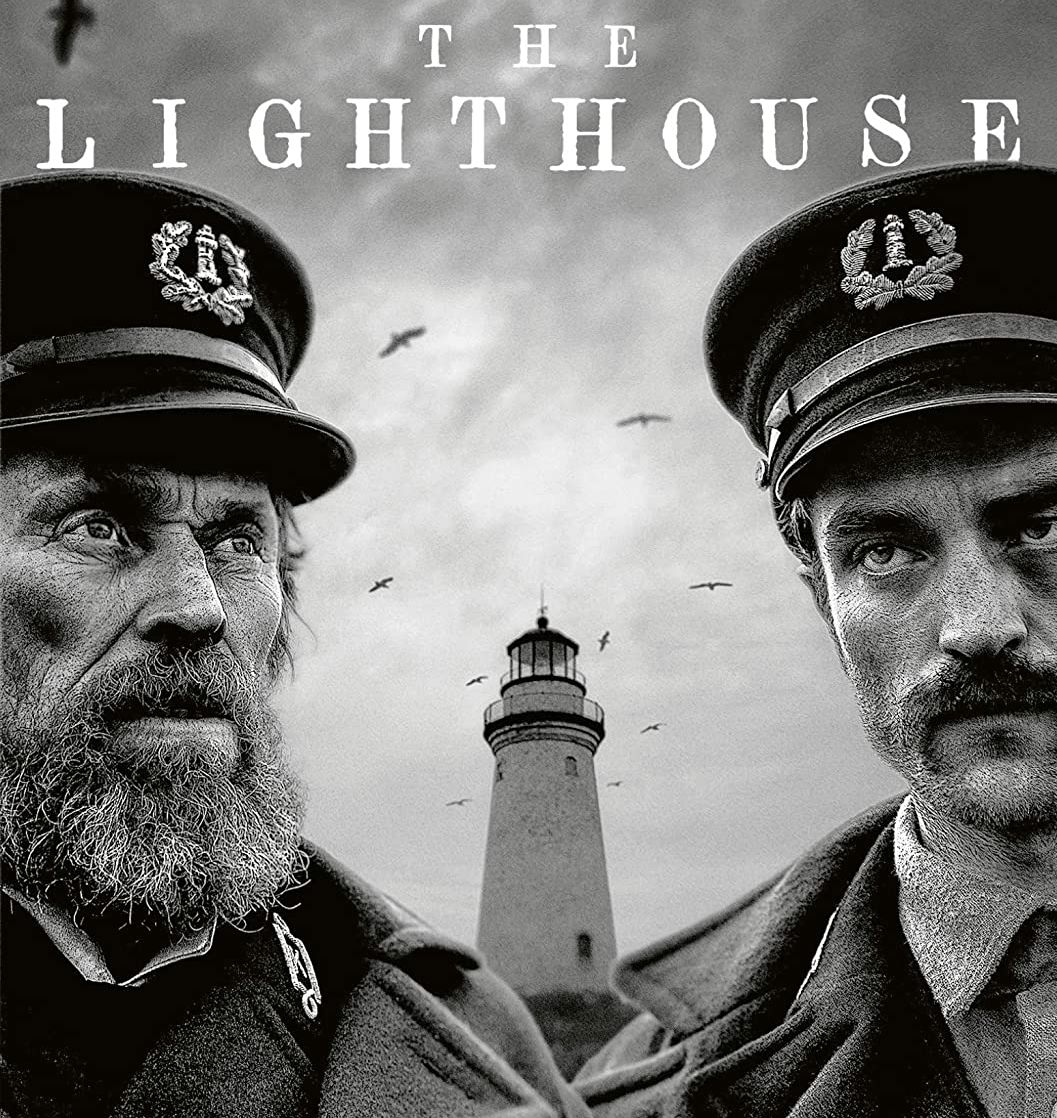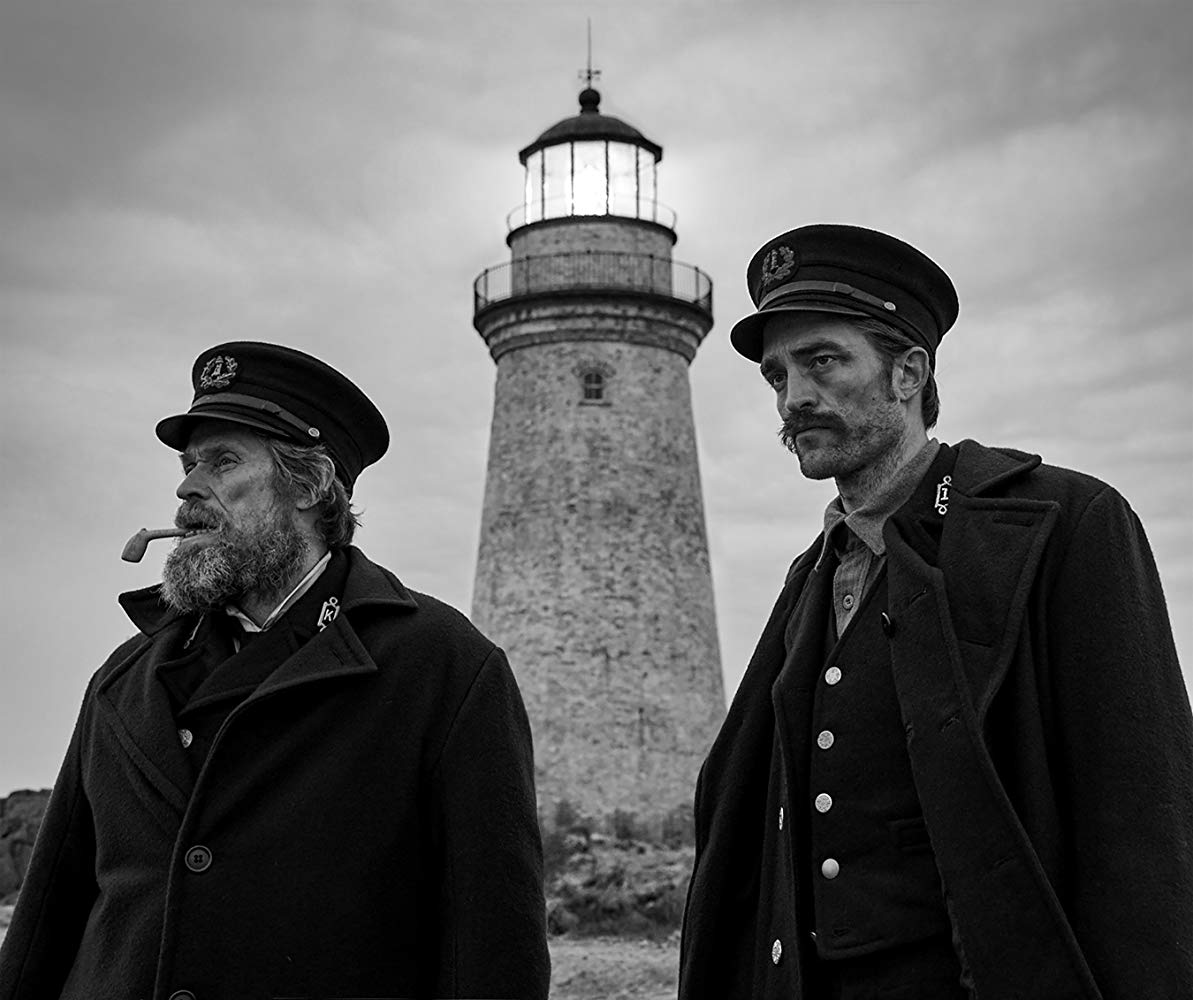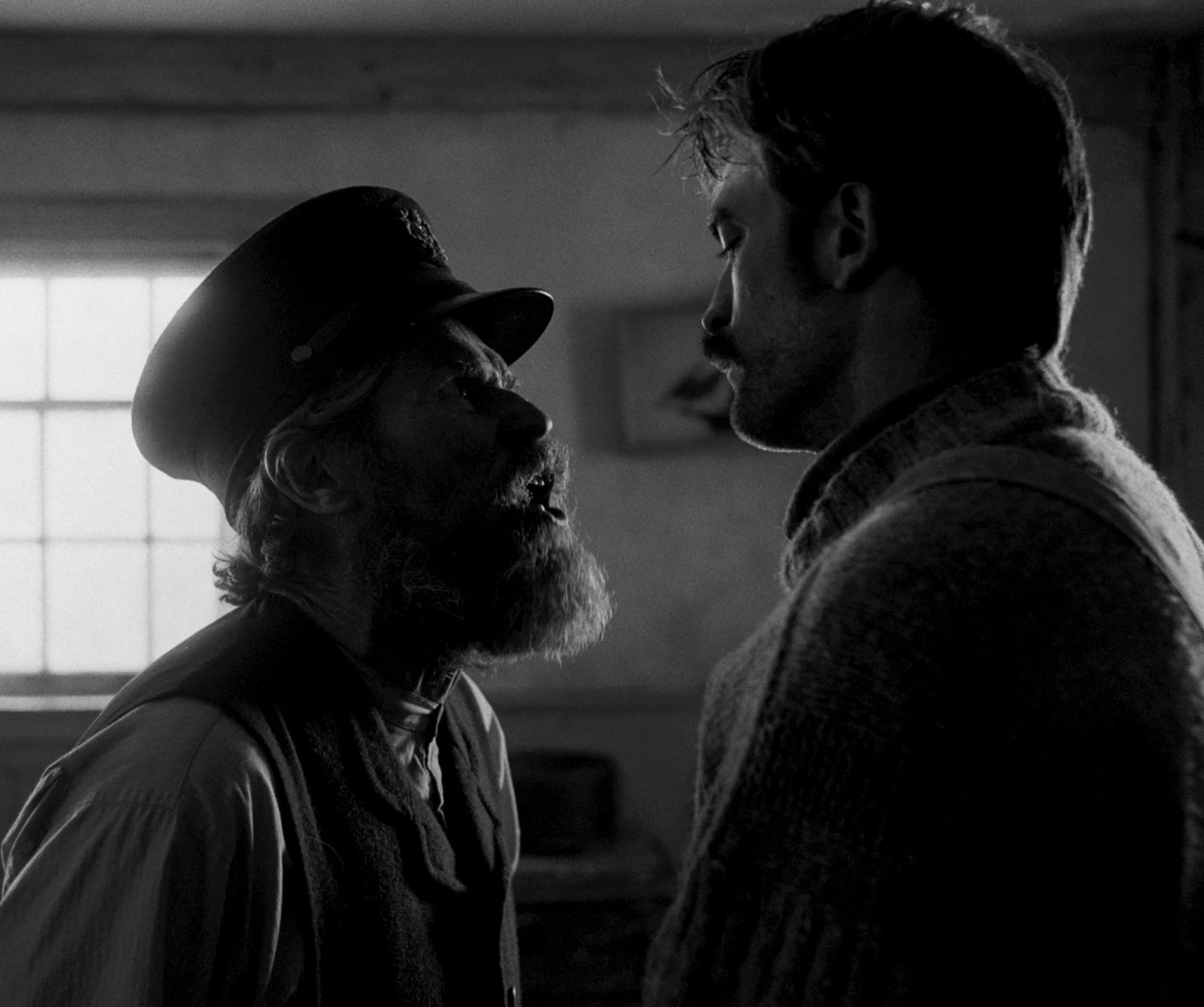Fear rules us all, and it can be reasonable or irrational, and it can be of many things or people. The dread of the unknown, on the other hand, is one of our greatest fears.
Lovecraftian horror is a type of horror fiction that emphasizes the fear of the unknown and mysterious as a source of terror. It deals with beings and characters from another world. Instead of employing gore or other shock aspects, it emphasizes the terror of the unknown and unfathomable.
It is called after American novelist H.P. Lovecraft, who wrote about cosmic dread, forbidden and hazardous knowledge, lunacy, non-human influences on humanity, religion, and superstition. However, in recent years, it has been scrutinized and criticized for the racism seen in Lovecraft’s horror works.
Robert Eggers directed and produced The Lighthouse, a black-and-white film that was released in 2019. With his brother Max Eggers, he co-wrote the screenplay. It began as an attempt by Max to produce a modern spin on Edgar Allen Poe’s “The Light-House.” When Robert came on, it turned into a successful attempt to redefine Lovecraftian terror.
Robert Pattinson and William Dafoe appear in The Lighthouse, which premiered at the 72nd Cannes Film Festival on May 19, 2019, and was released in theaters by A24 on October 18, 2019. On an $11 million budget, it grossed more than $18 million and received great reviews, with praise for the director and acting.
It was nominated for Best Cinematography at the 92nd Academy Awards and the 73rd British Academy Film Awards, among other nominations, and won at numerous award shows. “A gripping story brilliantly filmed and led by a pair of powerhouse performances; The Lighthouse further establishes Robert Eggers as a filmmaker of exceptional talent” according to Rotten Tomatoes critics.
There is enchantment in the light – The Lighthouse (2019)

The Lighthouse follows a simple premise. It is centered around a lighthouse in the 1890s and the lives of Willian Dafoe who portrays the character of Thomas Wake and Robert Pattinson who plays Ephraim Winslow and their life there. Eggers got the inspiration for this film from various sources and used all of them to create a masterpiece. Willem Dafoe’s accent is based on the jargon of Atlantic fishermen and sailors of the time, while Robert Pattinson’s is based on a very specific section of Maine farming dialect.
The black and white film starts off rather slow. Winslow starts a contract job as a “wickie” under the supervision of Thomas Wake – the long-time keeper of the island. Winslow finds a scrimshaw mermaid figurine inside his mattress which he decides to keep. He seems to be a rule-following hard worker in the beginning since he had read the entire lightkeeper’s manual.
He also seemed to have taken a dislike towards Wake presumably because he was a drunk. However, Wake proves to be a rather hard taskmaster who makes Winslow do a lot of manual labor like emptying chamber pots, ensuring a steady supply of coal, cleaning the floors, refilling oil in the lanterns, and forbids him entry to the lantern room of the lighthouse. Being denied entry to the light leads him to observe Wake secretly ascend the lighthouse and disrobe before the light.
He starts eating supper with Wake every night and gets to know about the previous wickie. According to Wake, he had gone mad and died talking about mermaids. The two men talk a little and start getting to know each other but never seem to understand each other. Wake starts acting like a father figure whose validation Winslow craves but also hates him at the same time.
He warns Winslow against harming the seagulls as they are said to be the reincarnation of sailors and killing one brings bad luck. During his stay, Winslow begins to hallucinate about sea monsters, dead bodies, and masturbates to the mermaid figurine.
The movie starts to pick up speed from the day before Winslow’s scheduled departure. He discovers a dead seagull in the cistern when another seagull starts attacking him. In a fit of rage, he kills the bird despite Wake’s warning.
The wind starts to pick up suddenly turning into a violent storm. However, since it is Winslow’s last night at the lighthouse, he decides to accompany Wake by drinking along with him. The night progresses with them getting extremely drunk and alternates between being intimate and hostile with moments of playfulness.
While emptying the chamber pots, he notices a washed-up dead body on the shore who turns out to be the mermaid. She awakens and howls at him, so he flees. Once back at the cottage, Wake tells him they are out of rations. Looking at Winslow’s face, seems to portray a sense of disdain for his superior.
Turns out, the rations that they were low on were bottles of gin that Wake and Winslow unearth from the lighthouse’s base. As the storm continues to rage, the two men drink away their days and continuously alternate between affectionate homoeroticism and hostility seen between fathers and their sons.
The movie has recurrent themes of sexual fantasy and masturbation. There is a scene during the movie where Dafoe and Pattinson are almost about to kiss but Pattinson pushes him away. Robert Eggers has said “Am I saying these characters are gay? No. I’m not saying they’re not either.
Forget about the complexities of human sexuality or their particular inclinations. I’m more about questions than answers in this movie” when asked about the homoeroticism in the movie. He also admits to being highly influenced by Carl Jung’s work and hoped that “it’s a movie where both Jung and Freud would be furiously eating their popcorn” which, according to me, it certainly did.
They spend their days drinking and Winslow’s obsession to find out about the light grows so much that he tries to unsuccessfully steal the lantern room keys. He also finds a lobster trap containing the head of the previous wickie. He concocts a sexual fantasy about the mermaid again as well. While creating that scene, they based the design of the mermaid’s genitalia on shark labia and it was constructed out of silicone.
As their drunken stupor continues, Winslow’s guilty conscience gets better of him, and decides that he trusts Wake enough to tell him the secret he has been carrying all this time. He reveals that Ephraim Winslow is not his real identity, Thomas Howard is. Winslow was his old foreman who died in an accident that Howard purposely chose to ignore.
Wake starts chasing Howard with an ax and breaks their emergency lifeboat while accusing him of “spilling his beans”. However, he switches up claiming Howard was the one who chased him and destroyed the boat. Surprisingly, Howard agrees and hands him the dinner knife he had swiped earlier. Once they run out of alcohol, they start drinking turpentine and honey as the storm becomes worse.
It floods the house when Howard finds the logbook kept by Wake which portrays him in quite a negative light calling him an incompetent drunk who should be sacked without pay. The two men fight and Howard beats Wake into submission. He makes Wake walk on all fours like a dog and takes him to the base of the lighthouse to bury him alive. Wake curses him to a Promethean fate while being buried.
Howard takes the keys to the lantern room but Wake somehow comes back and strikes him with an axe. Howard, in retaliation, kills Wake with the same axe and heads to the lantern room. He opens the Fresnel lens in the lantern room and tries to reach inside. There is no indication of what is seen by Howard except distorted violent screaming.
The scene cuts to a barely alive Howard naked on the rocks as a flock of gulls peck at his intestines. This is a nod to the curse by Wade as Prometheus was also punished in a similar way in which a bird ate his liver daily. Wake’s character also seems to be modeled around the prophecy-telling ocean god, Proteus as he is not only shown as a sea creature with tentacles, he also accurately predicts Howard’s death.
The Lighthouse embodies the true Lovecraftian sense of horror where one starts feeling the same kind of horror and fear of the unknown and unknowable along with the characters. Eggers has created the film in such a way that the viewer feels like they are slowly losing sanity along with the characters.
The lines of what is real and true start blurring and merging into irrational thoughts, fears, and hallucinations. There were other versions of the scripts that were “too obvious.” However, Robert Eggers’ goal was to make the audience go insane and confused like Winslow, so the final script ended up being even more confusing for them.
The Lighthouse Based On A True Story

The story of The Lighthouse is loosely based on The Smalls, an isolated rock island, 20 miles off the Welsh Pembrokeshire coast. In 1810, two lighthouse keepers, Thomas Griffiths and Thomas Howell were stationed there. It was the story of two men who hated each other and manned a lighthouse in isolation just like Winslow and Wake, but the movie obviously took creative liberties while translating the story to film.
According to reports, Howell and Griffiths were hostile towards each other and were forced to be in closed quarters away from civilization with only each other for company. Griffiths became unwell after sustaining injuries in a freak accident and passed away after a few weeks under mysterious circumstances. Howell was scared that he would be accused of murder due to his bad relations with Griffiths and the mysterious circumstances of his death.
He decided to create a makeshift casket for his fellow keeper. Unfortunately, the casket did not survive the bad weather and storm resulting in Griffiths’ body getting caught and suspended against the lighthouse window. Howell was alone with Griffiths’ corpse for over three weeks according to estimates.
Due to the wind and bad weather, Griffiths’ body would knock against the window making it seem like he was trying to get inside the lighthouse. The entire experience was highly traumatic for Howell, as it would be for any human being; and he was found to be inconsolable and severely affected by the entire experience of it.
The most tragic and horrifying part of the entire incident was that several fishing boats passed the Smalls lighthouse during those three weeks, but none were aware of the horrors hidden within the structure.
Following the tragedy at the Smalls lighthouse in 1801, lighthouse regulations were changed immediately, with three lighthouse keepers becoming the minimum requirement for all coastal structures moving forward. As a result, the Smalls lighthouse tragedy can be viewed as a grim yet crucial incident in maritime history that exposed the hazards posed to Wickies and resulted in sweeping safety regulations for the time.
Why should you watch The Lighthouse?

The Lighthouse is a brilliant movie that somehow also feels like a train wreck in a good way. It starts off slow but becomes engrossing and spellbinding keeping you hooked to the screen. One is enraptured by the cinematography from the very beginning. The movie is black and white which is already something that draws the attention of viewers but the cinematography really ties it all together.
The shots cut from one to another seamlessly while creating the kind of confusion that would leave you asking “What just happened here?”. Since the film is set in 1890, it was shot using 35mm black & white Double-X 5222 film, with vintage Baltar lenses supplementing the Panavision Millennium XL2 camera from 1918 to 1938 to stay true to the time period.
To remain true to his work, rain and wind machines were rarely used because much of the film was shot in natural weather, with director Robert Eggers remarking that “the craziest and dramatic stuff was shot for real.” Because they were concerned about losing Pattinson’s character to a riptide, the crew had to shoot the scene when he goes into the sea at night after the weather calmed down.
The dedication of the actors and their brilliance simply blew me away. Dafoe and Pattinson are very talented actors but this film goes on to show their brilliance as they carried the entire movie on their backs. They have highly different styles of acting but their chemistry is electric. Director Robert Eggers quote “Sometimes he’d beat himself in the face so bad.
Or when it was raining through the cottage roof, Rob was drinking the rainwater in-between takes. He also spun around in circles a lot, which was helpful for him. Or he’d stick his fingers down his throat to make himself gag, stuff like that.” definitely goes on to show Pattinson’s dedication towards his role along with his quirks.
Lovers of Lovecraftian horror, survival films, psychological thrillers, and of course William Dafoe and Robert Pattinson should definitely watch the movie. It was definitely a great watch and it left me wondering about my perceptions of reality with just one thought on my mind, “what is happening?”, just as Eggers wanted. In my book, this is a major success.
